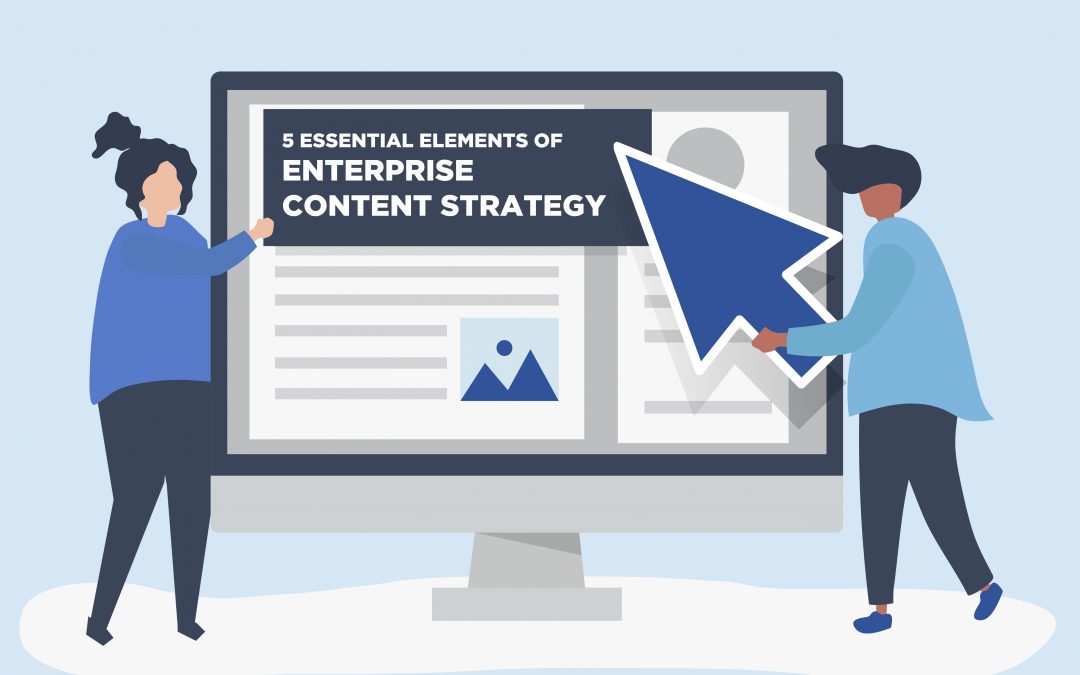Content serves a multitude of purposes within enterprise digital marketing. A good enterprise content strategy enhances SEO for key acquisition terms and helps marketers build links. It can also support the buyer journey from the earliest stage (awareness) all the way through to purchase.
The key to making this work is to comprehensively map the customer journey within your vertical, especially in the upper-funnel portion of the path to purchase. Most enterprises have solid bottom-of-funnel content – the kind that supports acquisition – but struggle to deliver relevant content at the top of the funnel.
Our experienced SEOs lay down 5 key elements you should consider while designing the content strategy for an enterprise company so as to enhance the customer experience.
Understand where the demand is
You shouldn’t write content just to write content. Rather, your content should meet demonstrated consumer needs.
How do you know where those needs are? The answer is a comprehensive keyword research.
By mapping the keyword universe for your target theme or themes, you’ll understand where both volumes and intent lie. This information provides valuable clues about the kind of information that consumers are seeking within your vertical.
Once you know where consumers’ needs are, you can identify the gaps in your own content strategy and develop a plan to fill them.
Be able to measure relevancy
Search algorithms continue to get better at interpreting intent, making relevancy more important than ever. Search bots score relevancy on the basis of keywords, meta tags, image descriptions, and other on-page elements. The challenge is measuring how each of those factors affects a page’s relevancy score (and eventual search ranking).
At iQuanti, we developed a proprietary enterprise SEO platform called ALPS (Analytics Led Platform for Search) to assist with this measurement process. In building ALPS, we reverse-engineered the Google algorithm to forecast how content will rank on a search engine results page (SERP) for any given keyword.
By “scoring” pages for topical relevancy, we help our clients create new content faster (or make smarter content edits).
Drive gains in relevancy with quality content
Simply addressing the intent of searches is not enough: your content must also be high-quality. Not that long ago, developing content in an SEO context simply meant stuffing text with keywords. But just as link-building has evolved from black-hat to white-hat, so too has enterprise content strategy.
The reasons you need compelling content are twofold. First, better content is simply more valuable to end-users.
Second, search engines have gotten much better at parsing content to understand its meaning. In an effort to provide users with the best possible experience, search engines score relevance and authority on both a page-by-page and a sitewide basis – meaning that your content needs to be consistently strong across your entire domain.
It’s because good content is useful to consumers that search engines value it so highly. The better you address searchers’ needs, the better positioned your content will be to rank.
Develop different types of content for different funnel stages
Because keywords still matter for delivering relevancy, text should comprise your core site content. Yet there are situations where other types of content can support your copy and accelerate the consumer purchase journey.
Infographics are one example. Heavy on visuals and light on text, infographics are ideal for educating consumers – the primary goal of content in the early stages of the path to purchase.
Also valuable are videos, which web users consume voraciously. HubSpot Research reports that video is preferred by consumers over any other kind of branded content. No. 2, if you’re curious, are email newsletters.
In an earlier article, we had explored the concept of keyword mapping for different purchase funnel stages for banking sector. A similar exercise for your specific industry and organization is what you should power your content strategy.
Leverage internal links to enhance UX and authority
Maximizing relevancy for a particular theme (i.e., topic) means developing content around all of the subthemes that fall under that broader subject. At iQuanti, we think of this as a “hub and spoke” approach, in which multiple supporting pages (subthemes) enhance relevancy for a primary page (theme).
Typically, the primary page is related to acquisition. The supporting pages then address the who, what, why and how that might lead to purchase.
Key to making this kind of content strategy work are internal links. Linking supporting pages and the primary page serves two purposes: 1) helping visitors navigate your product journey, and 2) helping search bots understand how your content pieces relate to each other.
By passing authority between pages, you increase your relevancy score for your primary theme. You’ll also make it easier for the customer to navigate from one phase of his experience journey to the next.
The Final Word
Content strategy provides benefits across your marketing organization. Better content improves the customer experience, increasing the likelihood that a site visit will lead to a conversion action. And when you focus your enterprise content strategy on SEO, you contribute to making all of your pages into an entry page from organic search.
Find out more about iQuanti’s Enterprise Content Marketing Services here.



